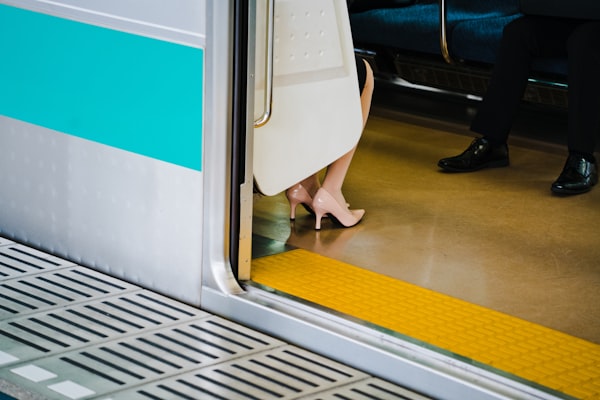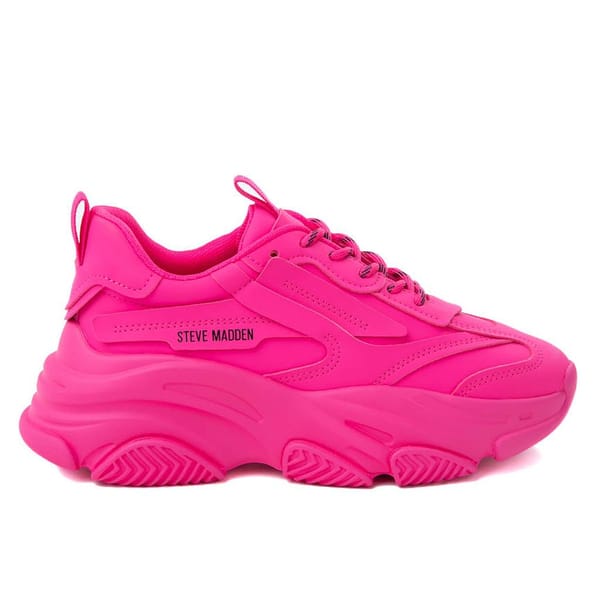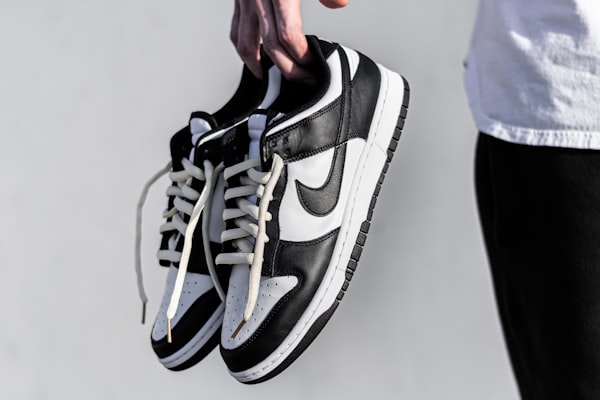Are you tired of the endless debate on whether your belt should match your shoes? Well, it's time to buckle up and get ready to dive into the age-old fashion rule and decide whether to match or not!
While some people swear by the classic rule of matching their belts to their shoes, others argue that this approach is outdated and limits creativity. But why does this topic even matter? Well, your belt and shoes are two of the essential accessories you wear, and they can make or break your entire outfit. Therefore, choosing the correct fashion is crucial to achieving the desired look.
Are you interested in learning the pros and cons of matching your belt to your shoes? Do you want to know when breaking the rule and showing off your unique style is appropriate? Then keep reading to discover everything you need to know to make an informed decision.
Grab a cup of coffee and get ready to explore the great debate of whether your belt should match your shoes. By the end of this article, you'll have all the information you need to decide whether to match or mix it up and show off your individuality. So, let's get started!
Arguments for Matching Belt and Shoes
The debate on whether to match your belt to your shoes has been ongoing for decades. Those favoring matching believe this is the safest and easiest option for any outfit while creating visual harmony and balance. The traditional fashion rule has been followed for years, but is it still relevant today? This section will explore the arguments for matching your belt to your shoes and see if they hold up.
1. It's a Longstanding Traditional Fashion Rule
The traditional fashion rule for matching your belt and shoes is simple: they should always match. The idea behind this rule is to create a sense of harmony and balance in your outfit, making it look polished and put together. So, for example, if you're wearing black shoes, you should wear a black belt to match. This rule is essential for formal occasions, such as business meetings, weddings, or black-tie events, where dressing appropriately is crucial.
The traditional rule is based on the belief that matching your belt and shoes shows attention to detail and a sense of style. It's a way of saying that you understand the principles of fashion and have put effort into your outfit. Additionally, matching your belt to your shoes provides a cohesive look that is visually appealing and gives the impression of confidence and sophistication.
2. It Creates Visual Harmony and Balance
Matching your belt to your shoes creates visual harmony and balance in your outfit. When the colors of your belt and shoes match, it creates a visually appealing, cohesive look that shows attention to detail. For example, a brown belt will create a cohesive look that ties your outfit together if you're wearing brown shoes. This creates a sense of balance and symmetry, making your outfit look polished and well put together.
When your belt and shoes don't match, it can create a visual distraction and throw off the balance of your outfit. For example, wearing black shoes and a brown belt can form a jarring contrast that draws attention away from the rest of your look. This can create chaos and disorganization, making your outfit look less polished and put together.
Matching your belt to your shoes is especially important for formal occasions where dressing appropriately is crucial. It creates a sense of formality and shows that you have put effort into your outfit.
3. It's the Safe and Easy Option for Any Outfit
Matching your belt to your shoes is a safe and easy option for any outfit, making it a popular choice. It provides a sense of uniformity and cohesiveness without putting too much thought or effort into the look. For example, a black belt is an easy and safe choice that will always work if you're wearing black shoes.
Matching your belt to your shoes is especially important for those less confident in their fashion sense. It provides an understanding of structure and guidance when putting together an outfit. The traditional rule of matching your belt to your shoes is a straightforward guideline. Following the rule makes it easy for those who may not be as comfortable with fashion or have as much time to put together an outfit.
Matching your belt to your shoes is also a practical choice, as it allows you to wear your shoes and belt interchangeably with other outfits. For example, if you have a black belt and shoes, you can wear them with any outfit requiring black accessories. This can save you time and money, as you don't need to purchase multiple belts or shoes for different looks.
While matching your belt to your shoes can be a safe and easy option, it's important to remember that it's not always necessary or desirable. It's possible to create a unique and exciting outfit by breaking the traditional rule and mixing and matching different colors and textures.
Matching your belt to your shoes can create a sense of visual balance and harmony in your outfit while providing a safe and easy option for any occasion. However, while following the traditional rule can be a good starting point, it's important to remember that matching is not always necessary or desirable. In the next section, we'll examine the arguments against matching and see why breaking the rule can be a fashion-forward choice.
Arguments Against Matching Belt and Shoes
While the traditional rule of matching your belt and shoes is still prevalent, some argue against it. Fashion-forward individuals believe mixing and matching different colors and textures can add depth and interest to an outfit, making it more unique and personalized. This section will explore the arguments against matching your belt and shoes.
1. It's an Outdated Fashion Rule
Some consider matching your belt to your shoes an outdated fashion rule. Fashion constantly evolves, so it's important to consider whether or not the rules are still relevant in today's fashion landscape.
One of the main arguments against this rule is that it limits creativity and personal style. Fashion-forward individuals argue that mixing and matching different colors and textures can add interest and depth to an outfit, making it more unique and personalized. In addition, it allows individuals to showcase their style and creativity rather than adhering to strict rules that may not suit their individual preferences.
Another argument against matching your belt to your shoes is that it can look too coordinated or "matchy-matchy." While matching accessories can create a cohesive look, they can also look predictable and uninteresting. Mixing and matching different colors and textures can add visual interest and depth to an outfit, making it stand out and appear more unique.
It's also worth noting that the traditional rule of matching your belt to your shoes may not always be practical or desirable. For example, if you're wearing brightly colored shoes or a patterned belt, matching them perfectly may not be possible or desirable. In these cases, breaking the rule and mixing and matching different colors and textures can create a unique, interesting, practical, and visually appealing look.
2. It's an Opportunity to Show Creativity and Individuality
For those who enjoy experimenting with fashion and expressing their style, mixing and matching different colors and textures provides a chance to showcase their creativity and originality. It allows individuals to experiment with different combinations and create unique outfits that stand out and capture attention.
Furthermore, mixing and matching accessories can create a more dynamic and visually exciting look. By breaking the traditional rule of matching your belt to your shoes, individuals can create a focal point in their outfit that draws the eye and creates interest. This can be achieved by incorporating a brightly colored or patterned accessory that contrasts with the rest of the look.
It's also worth noting that there are situations where matching your belt to your shoes may not be appropriate or desirable. For example, a formal event may require a more traditional look. In contrast, a casual event may provide an opportunity to experiment with more unique and personalized outfits.
3. It's a Chance to Add Depth and Texture to An Outfit
Breaking the rule of matching your belt to your shoes can also provide an opportunity to add depth and texture to a look. By mixing and matching different colors and textures, individuals can create a more dynamic and visually exciting look that captures attention and makes a statement.
For example, instead of matching a black leather belt to black leather shoes, an individual could opt for a brown leather belt or a textured fabric belt in a complementary color. This would create a more interesting visual effect and add texture to the outfit. Similarly, individuals can add depth and variety to their look by pairing shoes with different materials or textures, such as suede or patent leather.
Additionally, incorporating different colors and textures can help highlight different elements of an outfit. For example, by wearing a brightly colored or patterned belt that contrasts with the rest of the outfit, individuals can create a focal point that draws the eye and adds interest.
It's important to note that while mixing and matching different colors and textures can create a visually exciting look, it's essential to maintain balance and cohesion in the overall look. Combining complementary colors and textures allows individuals to create a harmonious and visually appealing outfit that showcases their personal style.
While the traditional rule of matching your belt and shoes has been a staple in fashion for decades, it's important to remember that fashion is ever-evolving. Breaking the rule and mixing and matching different colors and textures can add depth and interest to an outfit, making it more unique and personalized. As with all things fashion, the most important thing is to wear what makes you feel confident and comfortable in your outfit.
When to Match and When Not to Match
While the debate over whether or not to match your belt to your shoes continues, many fashion experts agree that there are times when it's appropriate and times when it's not. Knowing when to match and when not to match can help individuals create a polished and put-together look that reflects their style while adhering to the appropriate dress code. Factors to consider when making this decision are:
1. Occasion
One of the most important factors to consider when deciding whether or not to match your belt to your shoes is the occasion. As previously mentioned, in more formal or conservative settings, such as a job interview or a formal event, matching your belt to your shoes is generally considered appropriate. This creates a polished and professional look that conveys respect and attention to detail. On the other hand, in more casual or creative settings, such as a weekend brunch or a night out with friends, there's more room to experiment with different color and texture combinations.
2. Personal Style
Your style is another essential factor to consider when deciding whether or not to match your belt to your shoes. Some people prefer a more classic and polished look, while others prefer a more eclectic and creative style. If you value tradition and prefer a more traditional style, then matching your belt to your shoes might be your best option. On the other hand, if you like to experiment with different color and texture combinations and prefer a more creative style, then breaking the traditional rule might be a better option for you.
3. Clothing Color
Finally, clothing color is another factor to consider when deciding whether or not to match your belt to your shoes. If you're wearing a neutral-colored outfit, such as black, white, or gray, matching your belt to your shoes can create a cohesive and polished look. Conversely, if you're wearing a colorful or patterned outfit, then breaking the traditional rule and adding a belt or shoes in a contrasting color can add depth and interest to your look.
There are several factors to consider when deciding whether or not to match your belt to your shoes. These factors include the occasion, your style, and the color of your clothing. By considering these factors, you can create a look that reflects your style while adhering to the appropriate dress code for the occasion.
Tips from Our Editors
- A leather or suede belt in a neutral color can be dressed up or down, making it a versatile choice.
- A belt with minimal embellishments or patterns is easier to match with different outfits.
- A well-made, quality belt will last longer and be a better investment in the long run.
On a Final Note
Ultimately, deciding to match or not to match your belt and shoes is entirely up to you. Whether you're a traditionalist or a fashion rebel, the most important thing is to feel confident and comfortable in your outfit.
So, the next time you're getting dressed, consider the occasion, style, and color palette before deciding.
And always remember, fashion rules are meant to be broken - or at least bent a little!
Related Articles













